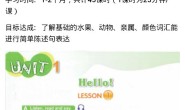jQuery源码太多关联了,所以不好单独拿出来做分析,就举一两个简单的例子吧:
toArray方法
jQuery.prototype = {
toArray: function() {
return slice.call( this );
},
}
Array.prototype.slice.call(arguments)能将具有length属性的对象转成数组,也就是说其目的是将arguments对象的数组提出来转化为数组。例如:
<script>
var a = {length:4,0:'zero',1:'one',2:'two'};
console.log(Array.prototype.slice.call(a));// Array [ "zero", "one", "two", <1 个空的存储位置> ]
</script>
Array
这是我们想要的基对象名称
prototype
这可以被认为是一个数组的实例方法的命名空间
slice
这提取数组的一部分并返回新的数组,并没有开始和结束索引,它只是返回一个数组的拷贝
call
这是一个非常有用的功能,它允许你从一个对象调用一个函数并且使用它在另一个上下文环境
下面的写法是等效的:
Array.prototype.slice.call == [].slice.call
看这个例子:
object1 = {
name:'frank',
greet:function(){
alert('hello '+this.name)
}
};
object2 = {
name:'trigkit4'
};
// object2没有greet方法
// 但我们可以从object1中借来
object1.greet.call(object2);//弹出hello trigkit4
分解一下就是object1.greet运行弹出hello + 'this.name',然后object2对象冒充,this就指代object2
var t = function(){
console.log(this);// String [ "t", "r", "i", "g", "k", "i", "t", "4" ]
console.log(typeof this); // Object
console.log(this instanceof String); // true
};
t.call('trigkit4');
call(this)指向了所传进去的对象。
在Object.prototype中已经包含了一些方法:
1.toString ( )
2.toLocaleString ( )
3.valueOf ( )
4.hasOwnProperty (V)
5.isPrototypeOf (V)
6.propertyIsEnumerable (V)
on方法
jQuery.fn.extend({
on: function( types, selector, data, fn, /*INTERNAL*/ one ) {
var type, origFn;
// Types can be a map of types/handlers
if ( typeof types === "object" ) {
// ( types-Object, selector, data )
if ( typeof selector !== "string" ) {
// ( types-Object, data )
data = data || selector;
selector = undefined;
}
}
})
jQuery.extend(object) :为扩展jQuery类本身.为类添加新的方法。
jQuery.fn.extend(object) :给jQuery对象添加方法。
!= 在表达式两边的数据类型不一致时,会隐式转换为相同数据类型,然后对值进行比较.
!== 不会进行类型转换,在比较时除了对值进行比较以外,还比较两边的数据类型, 它是恒等运算符===的非形式。
on : function(){} 是js对象字面量的写法
{键:值,键:值}语法中的“健/值”会成为对象的静态成员。如果给某个“健”指定的值是一个匿名函数,那么该函数就会变成对象的静态方法;否则就是对象的一个静态属性。
jQuery类型判断
type: function( obj ) {
if ( obj == null ) {
return obj + "";
}
return typeof obj === "object" || typeof obj === "function" ?
class2type[ toString.call(obj) ] || "object" :
typeof obj;
},
前面已经分析了,class2type = {};所以class2type[ toString.call(obj) ] =
{}.toString.call(obj)。它的作用是改变toString的this指向为object的实例。
转载请注明:苏demo的别样人生 » jQuery 源码


 微信扫一扫,打赏作者吧~
微信扫一扫,打赏作者吧~


